ຂປລ
(KPL)Vientiane Capital is located on a curve of the Mekong River, it has a recorded history that stretches back to around 1,000 AD. The area was originally settled because of the fertility of the surrounding alluvial plains, and Vientiane became the capital city of Laos around the mid - 16th century. Recently, Vientiane capital has consisted of 9 districts with 840,940 population (in 2023).
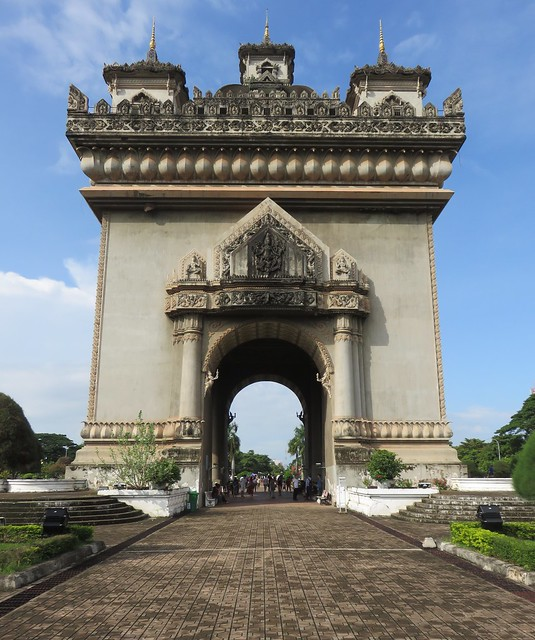
Patuxay
(KPL)Vientiane Capital is located on a curve of the Mekong River, it has a recorded history that stretches back to around 1,000 AD. The area was originally settled because of the fertility of the surrounding alluvial plains, and Vientiane became the capital city of Laos around the mid - 16th century. Recently, Vientiane capital has consisted of 9 districts with 840,940 population (in 2023).
Vientiane Capital is the home to the most significant national monument in Laos: ThatLuang, which is the symbol of Lao and an icon of Buddhism in Laos. Of the many beautiful Wats in Vientiane, a visit to Wat Sisaket is a must; built in 1818, this is one of the oldest temples in Vientiane. Besides, Hor Phakeo, across the street from Wat Sisaket houses, a beautiful collection of Buddha statues, including traditional Lao style of the “Calling for Rain” and “Offering Protection”. In the old part of Vientiane city, an attractive and interesting settlement is situated along the Mekong River where the ancient temples, museums, monuments and parks are all located just a short distance apart.
Furthermore, The cosmopolitan capital of Laos, Vientiane, has galleries, boutiques, theatres, nightclubs and internet cafe, making it a major attraction for visitors from all around the globe. Although the city is small, it offers visitors a great variety of restaurants serving both Lao and foreign cuisine.
Weather
The average maximum daytime temperature in Vientiane Capital in January lies at 33°C and the average minimum temperature goes down to around 17°C. Usually the days in January are hot while the nights are a bit cooler. Kindly noted to bring clothes appropriate for the weather.
Recommended Places
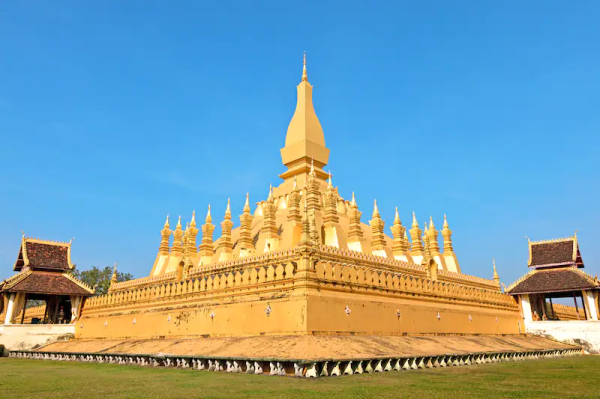
That Luang
That Luang: which is the symbol of Lao and an icon of Buddhism in Laos. The original stupa was built on the site in 1566 by King Saysetthathirath, and was restored in 1953. The golden stupa is 45 meters tall and is believed to contain a relic of the Lord Buddha. The gold centerpiece of this stupa echoes the curve of an elongated Lotus bud. Today it is the most important national cultural
The memorial monument, Patuxay, was built in 1957 and is perhaps the most prominent landmark in the city. It is situated on Lanexang Avenue. While the arc de Triomphe in Paris inspired the architecture, the design incorporates typical Lao motifs including “Kinnaly”, a mythical bird woman. Energetic visitors can climb to the top of the monument, which reveals an excellent panoramic view of the city.
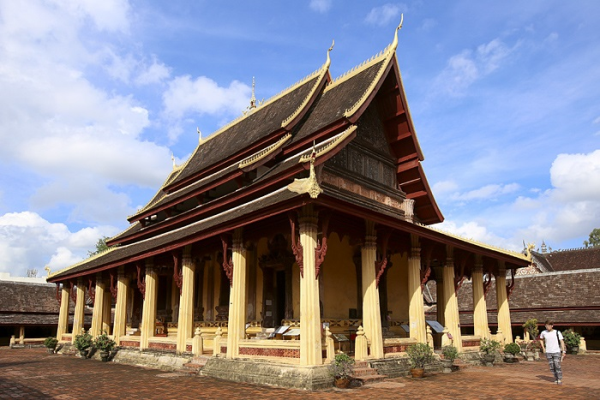
Sisaket Temple: Sisaket is the only ancient temple remaining intact after the destruction of the Siamese in 1828. It’s located in the center of the old city,where it was built in 1818 by King Anouvong. The old monastery stands intact in its original form and certainly is one of the most interesting in the country. Inside the main hall, the courtyard walls house hundreds of little inches and shelves containing a total of 6,840 Buddha images.
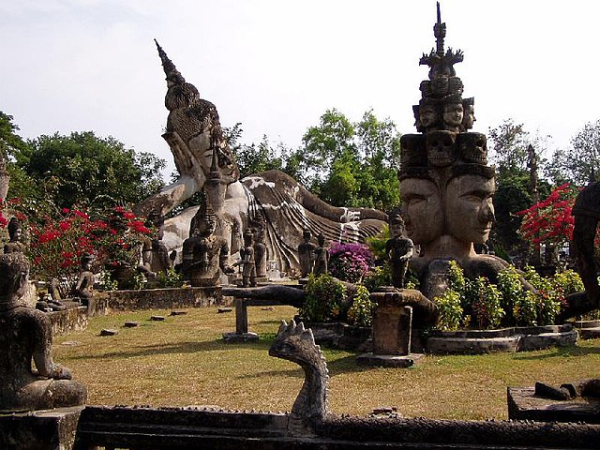
Buddha Park is a famous sculpture park with more than 200 religious statues including a huge 40-metre high reclining Buddha image. It was built in 1958 by Luang Pu Bunleua Sulilat, a monk who studied both Buddhism and Hinduism. This explains why his park is full not only of Buddha images but also of Hindu gods as well as demons and animals from both beliefs.
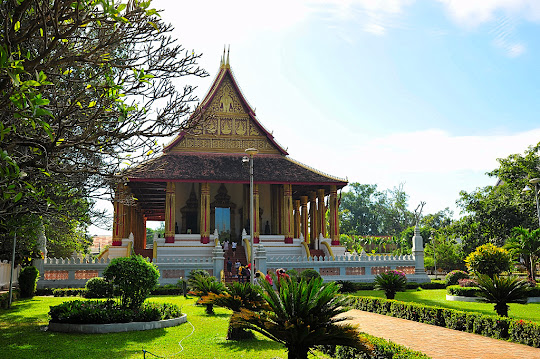
HOR PHRA KEO, an ancient temple was built in 1565 by King Xayasetthathilath to house the Emerald Buddha 1565 - 1779 (lost to the Siamese in 1828) as his personal place of worship. It was reconstructed in 1936. For this reason and unlike other temples in Laos, monks have not taken up residence here. During the 1970’s, the temple was converted from a worship place into museum and now houses the finest national collection of Buddhist sculptures and artifacts.
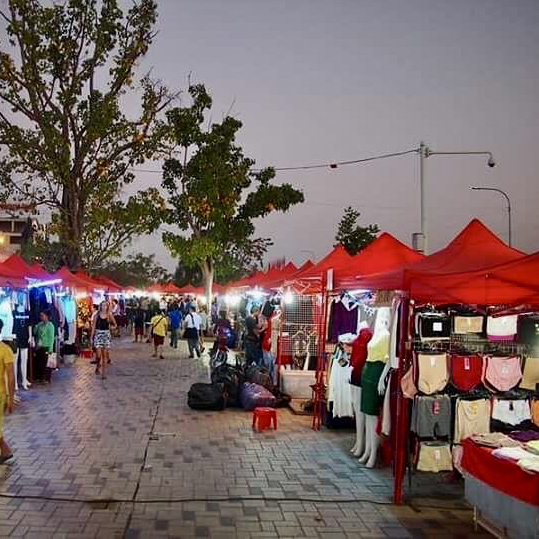
Vientiane Night Market is aimed primarily towards tourists, with clean, orderly stalls, and all manner of merchandise that make great souvenirs or mementos. It all begins around sunset when a small army of sellers begin setting up their red-roofed stalls directly on the riverside promenade. The whole riverside area is alive at this time with joggers and dog-walkers taking advantage of the cooling breezes and stunning backdrop of the sun lazily sinking into the Mekong river.
Recommended Dishes

Lao Papaya Salad also known as “Tum Mak Houng” is a popular Laotian dish. It is not just a salad, but a cultural symbol of the diverse culinary tradition of Laos. It is spicy and tangy and made from unripe green papaya, tomatoes, green beans, and fermented fish or crab. The ingredients are pounded together in a mortar and pestle to release the flavors and create a blend of sweet, sour, and spicy tastes.
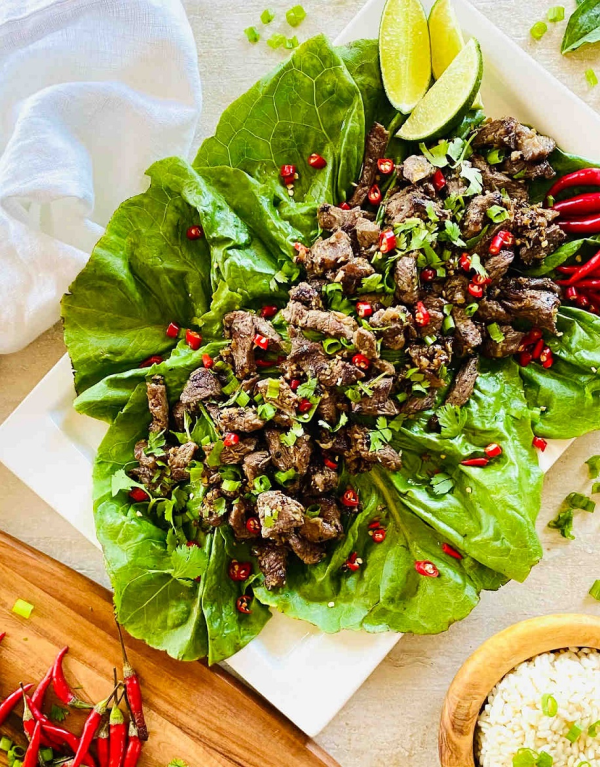
Larb is a lao meat salad that is national dish of Laos. Larb in the Lao language means "lucky" or it is a noun which refers to the meat or other flesh which has been finely chopped and pounded.
Bamboo Shoots Soup: This Laotian dish incorporates a medley of indigenous vegetables, such as bamboo shoots, pumpkin, sponge gourd, and a unique blend of herbs, notably bai ya nang, which bestows it with a unique and distinctive flavor. Furthermore, this diverse combination of herbs and vegetables not only enhances the dish’s taste but also offers numerous health benefits.
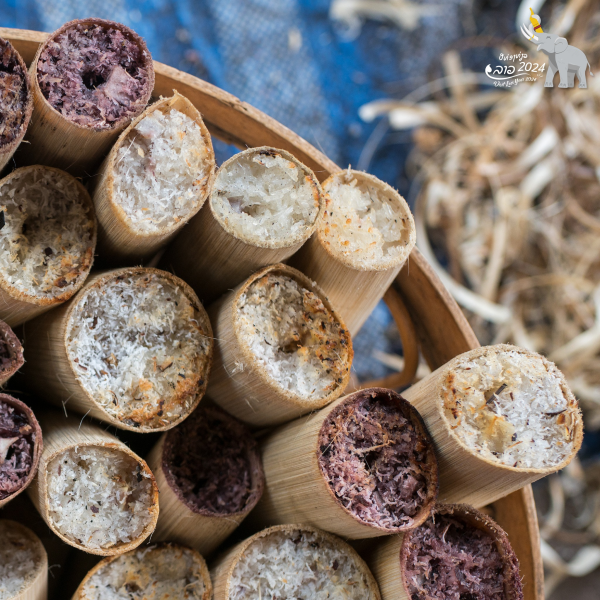
Bamboo Tubes of Sweet Custardy Sticky Rice also known as “Khao Larm”, there are two main versions, one made with normal white sticky rice, and the other made with black sticky rice (khao kam). The sticky rice is mixed with sugar, sweet red beans, and coconut cream and then stuffed into the bamboo. Then slow roasted over coals as they slowly cook and the ingredients mingle together.
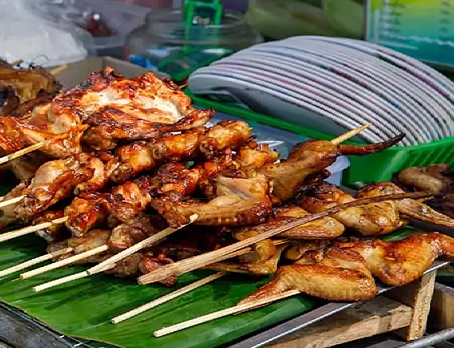
Lao Grilled Chicken or “Ping Gai”, this dish is tasty and packed with flavor since it is marinated in oyster sauce, thin soy sauce, garlic and cilantro. Mostly, Ping Gai is served with sticky rice to complete the meal and it is the most recommended dish to be served with Papaya Salad.
Khao Soy made from rice mostly eaten in Northern Laos. It is a hand sliced rice noodle soup with clear chicken, beef or pork broth topped with a tomato meat sauce made of minced pork, tomatoes, garlic and fermented bean paste. The dish is always served with a fresh vegetables and herbs.
KPL